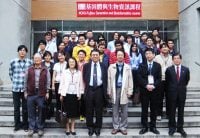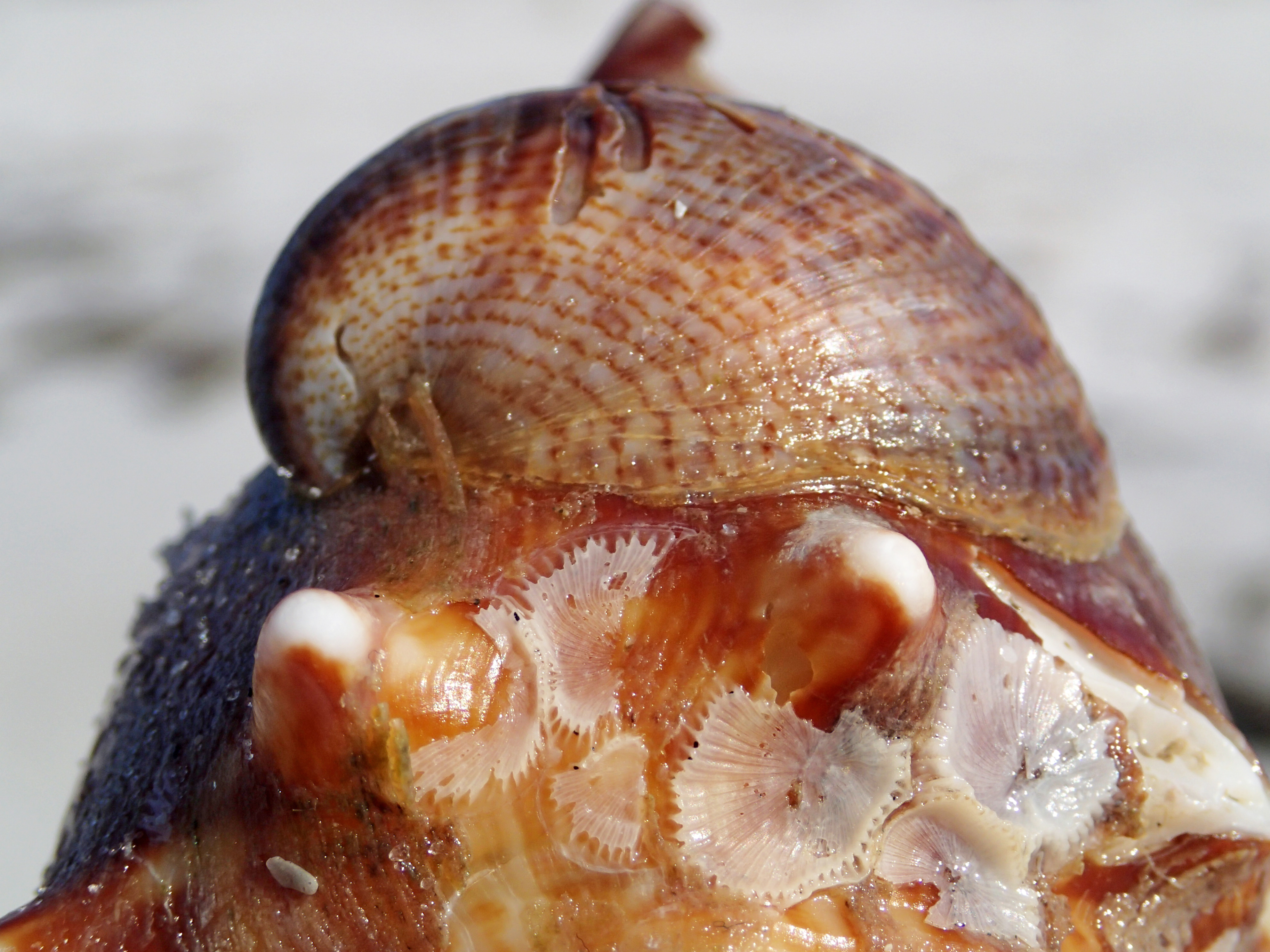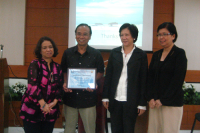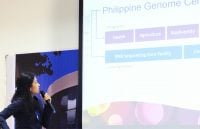As one of the speakers in the 1st MBB Conference during the week-long celebration of NIMBB’s 25th anniversary last December 9-12, 2012, Denice introduced the Philippine Genome Center to the NIMBB community. She presented an overview of what PGC is and its goals, giving emphasis on the DNA Sequencing Core Facility, its services, as well as opportunities for students and collaborators.

PGC attends 2012 Autumn Course on Genomics and Bioinformatics in Taiwan
Members of the Philippine Genome Center DNA Sequencing Core Facility and Core Facility for Bioinformatics participated in the 2012 Autumn Course on Genomics and Bioinformatics held at the National Cheng Kung University in Tainan, Taiwan. Gabriel Villamil of the PGC-DSCF and Lovette Cunanan and Joeriggo Reyes of the PGC-CFB attended the 5-day course along with students and researchers from Taiwan, Japan, India, and Vietnam.

PGC in the 39th Annual PSBMB Convention
The DSCF and CFB teams attended the 39th Annual Philippine Society of Biochemistry and Molecular Biology Convention last November 29-30, 2012 at Fort Ilocandia Resort Hotel, Laoag City, Ilocos Norte.

Disclosure of Disease Risks in Genomic Research
The program on Ethics, Legal and Social Issues of the Philippine Genome Center is inviting interested parties to a colloquium entitled “Disclosure of Disease Risks in Genomic Research” on December 10, 2012, 2pm at NIH Conference Room, University of the Philippines, Manila.

DNA evidence could free the innocent -if it were available
Dr. Maria Corazon de Ungria, director of the Philippine Genome Center’s Forensics and Ethnicity program shared with Ms. Jessica Zafra of InterAksyon.com the significance of DNA tests, and the Innocence Project Philippines.

DSCF attends the 4th Annual Asia-Pacific Life Technologies Sequencing Summit
Dr. Cynthia Saloma and research assistant Denice Palmos attended the 4th Annual Asia-Pacific Life Technologies Sequencing Summit last October 7-9, 2012 held in Bali, Indonesia. The event featured plenary sessions and scientific poster presentations, which highlighted different research studies from a wide variety of genomic field specializations.

PGC attends the BGI Bioinformatics Workshop
Last September 17-21, 2012, members of the PGC Core Facilities attended a bioinformatics workshop held in BGI (formerly Beijing Genomics Institute) Shenzhen, China. Marylette Roa represented CFB while David Gonzales represented DSCF. The workshop included topics on variation detection, small RNA research, transcriptomics, genome assembly, single cell omics, and epigenetics.

Adaptive radiation of venomous marine snail lineages and the accelerated evolution of venom peptide genes
Olivera B.M., Watkins M., Bandyopadhyay P., Imperial J.S., de la Cotera E.P., Aguilar M.B., Vera E.L., Concepcion G.P., Lluisma A.O.
An impressive biodiversity (>10,000 species) of marine snails (suborder Toxoglossa or superfamily Conoidea) have complex venoms, each containing approximately 100 biologically active, disulfide-rich peptides. In the genus Conus, the most intensively investigated toxoglossan lineage (∼500 species), a small set of venom gene superfamilies undergo rapid sequence hyperdiversification within their mature toxin regions.

Dr. Padilla receives Concepcion Dadufalza for Distinguished Achievement Award
InterAksyon.com · Monday, September 17, 2012
Dr. Carmencita David-Padilla who introduced new born screening in the country is the latest recipient of the Concepcion Dadufalza for Distinguished Achievement Award.

PGC Balik Scientist supports democratization of genomic sequencing
The Philippine Genome Center’s DNA Sequencing Core Facility (DSCF) through its Program Director, Dr. Cynthia P. Saloma, hosted a Balik Scientist in the person of Dr. Ernesto C. Almira of the Interdisciplinary Center for Biotechnology Research, University of Florida, USA.

